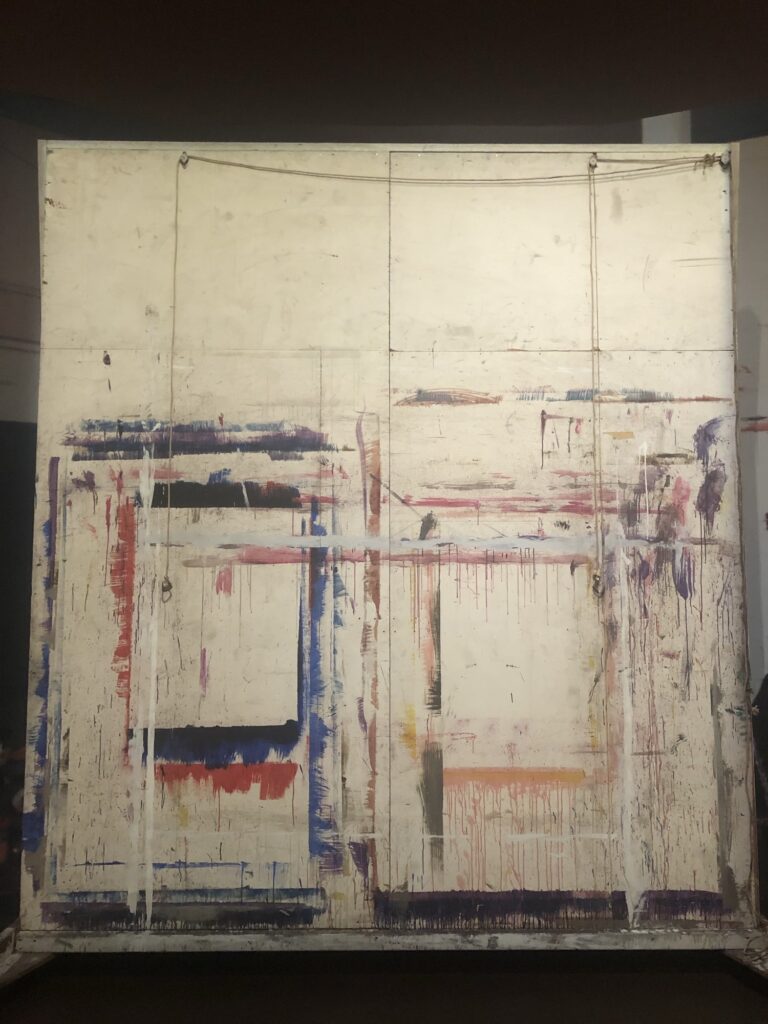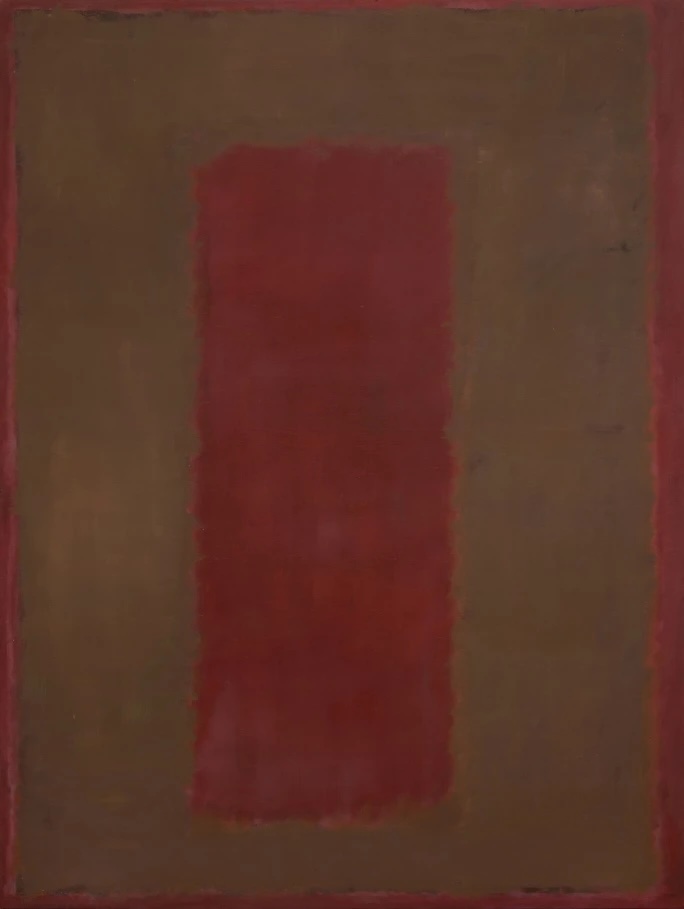
I did not realize the full extent of Mark Rothko’s painting on paper. I remember seeing a works on paper show at Pace in the 1990s and feeling—wrongly, as it turns out—that it was just a second-tier project, and what was left in the estate.
Instead it is clear from the National Gallery’s show that Rothko was very engaged with painting on paper at specific points of his career, including windows of what is now called his classical phase. He took great care to paint and finish them, experimenting with composition, materials, borders, and mounting. [NGL, some acrylics look weird.]
But to make them he developed a practice of taping a sheet of paper to the movable, large-scale, plywood walls that he used as easels. One is on view at the end of the exhibition, built up with the overpainted palimpsests of various works.

The way they kind of resemble the inverted composition of the Seagram paintings, made years earlier, is a coincidence. But that body of work does show Rothko’s search for something new didn’t suddenly appear in the 60s.
